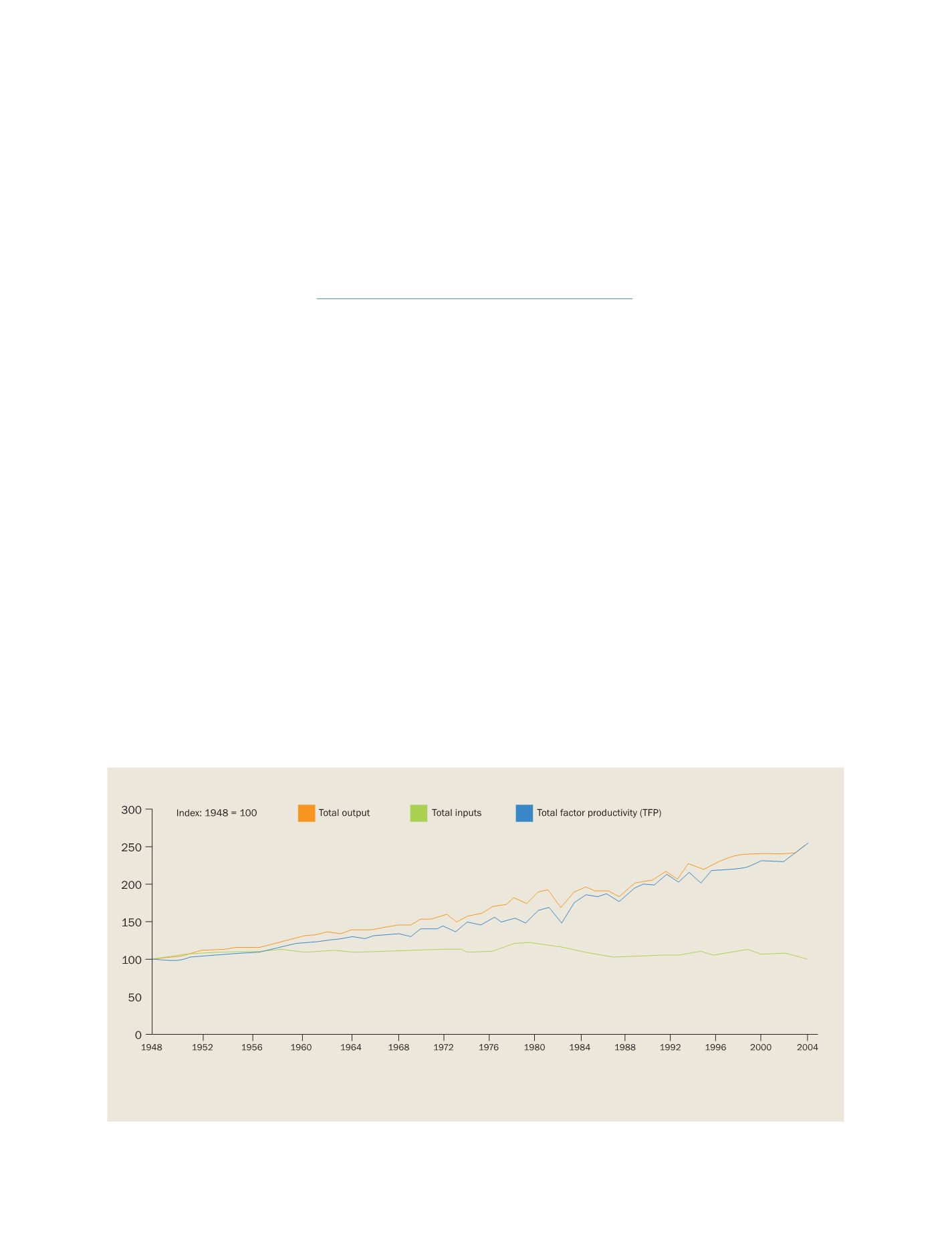

[
] 246
Global agriculture in the 21st century:
sustainable production of food,
fibre, fuel and more
Ghassem R. Asrar, PhD, Deputy Administrator, Agricultural Research Service,
United States Department of Agriculture
A
griculture is assuming an increasingly important role in
today’s global economy. In addition to its traditional role
as a producer of food, feed, and fibre, agriculture is now
expected to provide bio-based energy for a growing population,
and to do so sustainably.
In the past, scientific discoveries and technological innovations were
instrumental in meeting the world’s increasing demands for food,
fibre, feed and water. They are now even more vital if agriculture is
to also provide bio-based energy while maintaining/enhancing Earth’s
renewable resources. Throughout the history of modern agriculture,
technological innovations have resulted in significant increases in
food, feed and fibre production globally, while the total amount of
water and energy used to achieve this growth stayed the same or
decreased significantly in many parts of the world. Advances in plant
breeding, water management, conservation tillage practices and
weather prediction contributed to this tremendous achievement. The
question now whether we can sustain or enhance this
pace of innovation to meet the growing demand for food,
fibre, water and renewable energy from agricultural
ecosystems for future generations while we maintain the
quality and integrity of these ecosystems and the envi-
ronment.
During the past 300 years, the transition from natural
ecosystems into agriculturally used and managed ecosys-
tems has accelerated, especially since the 1950s. More
land was converted to cropland in the first few years after
1950 than during the 150-year period of 1700–1850.
The world population also grew from 2.5 billion to 6.5
billion during 1950–2005, a factor of 2.6. The world
agricultural output grew by a factor of 5, keeping pace
with population growth.
Since 1950, agricultural output has been growing at
about two per cent per year, with higher rates in devel-
Source: Fuglie, Keith O., James M. MacDonald, and Eldon Ball. Productivity Growth in US Agriculture. EB-9, US Dept. of Agriculture, Econ. Res. Serv. September 2007
Changes in US agricultural output, inputs and total factor productivity
1
since 1948
Technological innovations have resulted in significant increases in food, feed and fibre production globally,
while the total amount of water and energy used to achieve this has stayed the same or decreased
1
Total factor productivity measures total output per total inputs, or the overall efficiency of agricultural production
S
OCIETAL
B
ENEFIT
A
REAS
– A
GRICULTURE
















